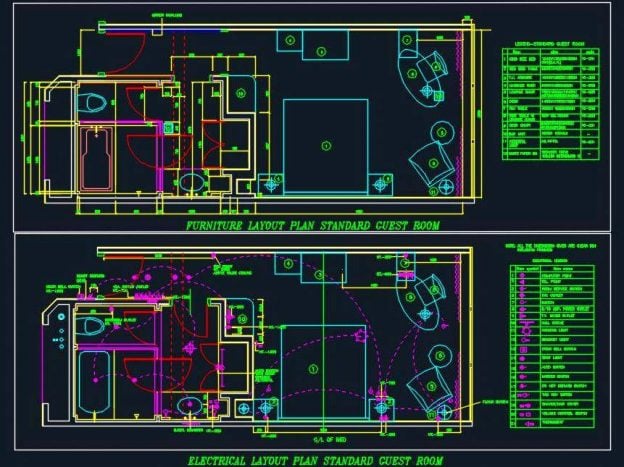Course Description
This course, “Electrical Designing and Drafting Course (Part 1),” introduces the student to the process of designing residential and commercial projects. After completing this course, you will have high confidence in your practical work and start working on your projects. Or if you are fresher, you can start your career as a professional in this competitive world.
Here, we present all the calculations and explanations as per the NEC and other international codes and standards.
- Introduction: In this chapter, we are going to explain the basics of MEP, Power flow analysis
- Basics of electrical: This chapter explains the basics of electrical engineering, basic formulae, types of load, operating voltage levels, etc.
- Basic formulae: Here we will practice some most important formulae plus a short assignment for you.
- Codes, Standards & Lux Levels: Here you will see internationally acceptable codes & standards, Lux Level required for any area for lighting design.
- Illumination Design: This chapter deals with the foundation of a lighting system. Types of lighting lamps, types of the lighting system, Kelvin Color Temp., CRI
- Basics of Air Conditioner: For small projects, you will see the basics of A/C
- Circuit Breakers: This chapter is very much interesting and is very much practical. Here you will learn what is CB, types of CB, Working & operation of CB, Calculation of CB, plus assignment, etc.
- Capacitor Banks: Capacitor bank is much important for any electrical engineer, this chapter explains what is the need for a capacitor bank, the benefits, and how to calculate the size of the capacitor bank.
- Electrical Designing: In this chapter, you will learn the calculation of lighting/raw power socket, calculation of fans, no. of lighting fixtures, size calculation of A/C, load scheduling/ Load Balancing, Size of DB, Assignment, etc.
- Electric Motors: Basic of electric motors, types of motor and their application, starting methods, starting current, etc.
- Electrical Transformer: Introduction of the transformer, parts of transformer, classification of the transformer, cooling methods, winding insulation class, faults in transformer, size calculation of transformer, etc.
- Diesel Generator: Introduction of the DG, parts of DG, ATS, classification of the transformer, faults in DG, size calculation of DG, etc.
- UPS: Introduction, types of UPS, UPS size calculation, Battery size calculation
Course Content
- Introduction
- The Basics of Electrical
- The Basic Formulae
- Codes, Standards and Lux Levels
- Illumination Design
- The Basics of Air Conditioner
- Circuit Breakers
- Capacitor banks
- Electrical Design of a Flat (Internal Designing)
- Electric Motors
- Electrical Transformers
- Diesel Generators (GenSets)
- Uninterruptible Power Systems (UPS)
Who Is This Course For
- Electrical Graduates
- Electrical Designers
- Freshers
- Electrical Operators
- Site Engineers
- Facility Maintenance Persons
- Technicians
Requirements
- Passion to learning
- Basic technical knowledge
Downloadable course documents
After purchasing the course, students can download the following documents:
- The basics of Electrical - Part #1 (PDF)
- The basics of Electrical - Part #2 (PDF)
- Handbook of Lighting Design (PDF)
- The Basics of Circuit Breakers (PDF)
- Use of capacitors to regulate the voltage in electrical networks – Seminar paper (PDF)
- The Motor Book (PDF)
- Power Transformers in Electrical Transmission and Distribution Grids (PDF)
- Everything you ever wanted to know about UPS systems, but were afraid to ask (PDF)
Course Content
About Instructor

Login
Accessing this course requires a login. Please enter your credentials below!


